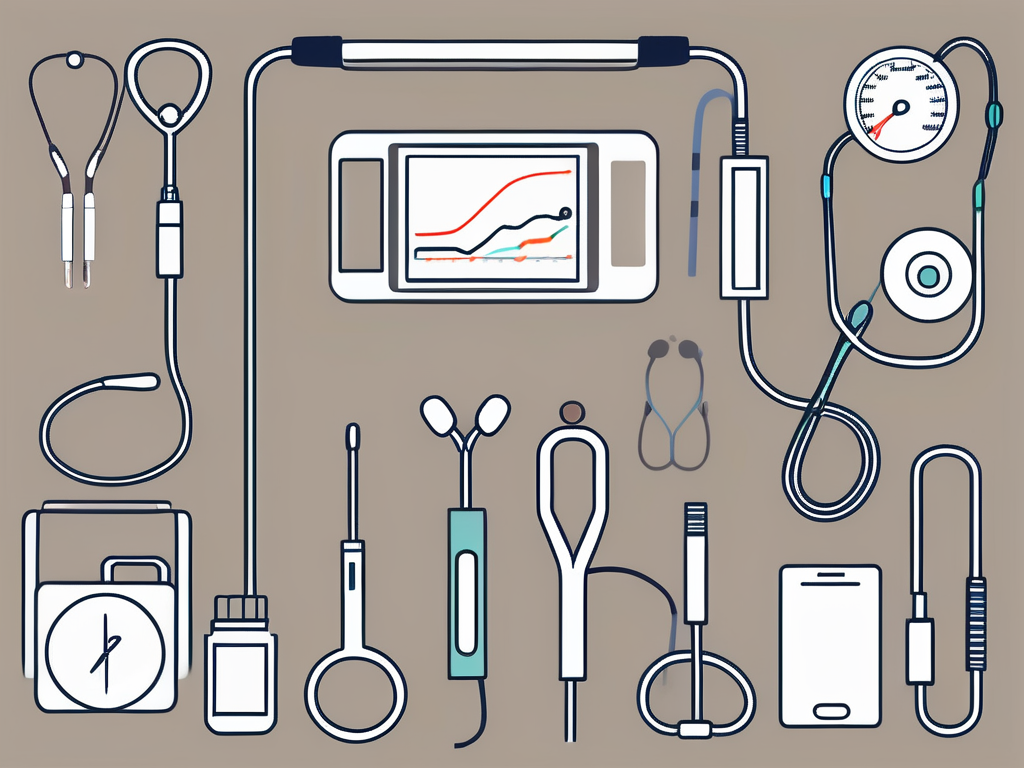In today's rapidly evolving healthcare landscape, it has become increasingly essential for healthcare systems to prioritize integrated healthcare and interoperability. The seamless exchange of data between different healthcare providers and platforms plays a pivotal role in improving patient care, enhancing user experience, and addressing the numerous challenges in healthcare communication. Let's delve deeper into the significance of healthcare interoperability and explore the various layers of device and app interoperability.
Understanding Healthcare Interoperability
In its simplest form, healthcare interoperability refers to the ability of different healthcare systems and devices to communicate and exchange data seamlessly. In the era of digital healthcare, where patient information is stored in electronic health records (EHRs) and accessible through varying technologies, the importance of interoperability cannot be overstated. The smooth flow of data between different healthcare providers, patients, and even across various software platforms is critical for providing quality care and promoting patient safety.
The Importance of Seamless Data Exchange in Healthcare
Seamless data exchange in healthcare is the foundation for effective care coordination and improved patient outcomes. When healthcare providers can access and share patient information efficiently, it eliminates the need for redundant and repetitive tests and procedures. This not only saves time and resources but also minimizes the risk of medical errors. Imagine a scenario where a patient is transferred from one hospital to another. If the receiving hospital can seamlessly access the patient's medical history, previous test results, and medication information, it enables them to make informed decisions and provide appropriate care without delay.
Furthermore, seamless data exchange also plays a crucial role in population health management. By aggregating and analyzing data from various sources, healthcare organizations can identify trends, patterns, and potential health risks within specific populations. This information can then be used to develop targeted interventions and preventive strategies, ultimately improving the overall health of communities.
Key Components of Interoperable Systems
Interoperable systems rely on several key components to ensure smooth data exchange. These components include standardized healthcare data formats, secure communication protocols, and consistent data dictionaries. Standardizing the way data is structured and formatted allows different systems to understand and interpret the information accurately. Moreover, secure communication protocols, such as HL7 and FHIR, facilitate the safe transfer of data while maintaining patient privacy and security. Consistent data dictionaries further enhance interoperability by ensuring that the same terms and definitions are used across different systems and providers.
Another important component of interoperable systems is the use of application programming interfaces (APIs). APIs act as bridges that enable different software applications to interact and exchange data. They provide a standardized way for systems to communicate with each other, regardless of the underlying technology or programming language. By leveraging APIs, healthcare organizations can seamlessly integrate various software platforms, allowing for the seamless flow of data and information.
Exploring the Layers of Device and App Interoperability
Interoperability extends beyond the exchange of data between different healthcare systems and encompasses the integration of devices and applications. The seamless interaction between hardware and software is crucial for the proper functioning of healthcare technology.
Hardware and Software Integration in Healthcare Technology
In healthcare, devices such as monitoring equipment, wearable devices, and even implantable devices play a vital role in patient care. To ensure interoperability, these devices need to seamlessly integrate with the software platforms used by healthcare providers. This integration enables real-time monitoring, data capture, and analysis, allowing healthcare professionals to make informed decisions at the point of care.
Ensuring Compatibility Across Different Platforms
In a world where new platforms and technologies are constantly emerging, ensuring compatibility across different healthcare systems and platforms is a significant challenge. Healthcare organizations must invest in interoperable solutions that can adapt to evolving technologies and remain compatible across different platforms. By doing so, they can avoid the costly and time-consuming process of replacing entire systems or software platforms.
Enhancing User Experience Through Interoperable Devices
Interoperable devices not only improve clinical workflows but also enhance the user experience for both healthcare providers and patients. For healthcare professionals, the ability to access patient data from multiple sources in a single, consolidated view saves time and reduces cognitive load. Patients, on the other hand, benefit from the convenience of wearable devices that seamlessly connect with their smartphones, allowing them to monitor their health and share vital information with their healthcare providers easily.
Moreover, interoperable devices offer a new level of flexibility and convenience in healthcare settings. For example, imagine a scenario where a patient with a chronic condition needs to visit different healthcare providers for specialized care. With interoperable devices, the patient can easily share their health data with each provider, eliminating the need for repetitive tests and consultations. This not only saves time and resources but also ensures that the patient receives the most accurate and comprehensive care possible.
Furthermore, the integration of devices and applications in healthcare technology opens up new possibilities for remote patient monitoring. Interoperable devices can transmit real-time data to healthcare providers, allowing them to monitor patients' health status remotely and intervene promptly if necessary. This capability is particularly valuable for patients who live in remote areas or have limited access to healthcare facilities. It enables them to receive timely and appropriate care, improving their overall health outcomes.
Evaluating the Effectiveness of Interoperability Solutions
As the importance of healthcare interoperability continues to grow, it becomes crucial to evaluate the effectiveness of interoperability solutions and assess the impact they have on patient care and healthcare outcomes.
Interoperability in healthcare refers to the ability of different information technology systems and software applications to communicate, exchange data, and use the information that has been exchanged. This seamless exchange of data is essential for providing coordinated and efficient care to patients across various healthcare settings.
Metrics for Assessing Interoperability Success
Metrics play a vital role in measuring the success of interoperability initiatives. By tracking and analyzing metrics such as the percentage of successful data exchanges, reduction in duplicate testing, and improved care coordination, healthcare organizations can assess the impact of interoperability solutions on patient care and outcomes.
Furthermore, metrics can also help organizations identify areas that require improvement and optimize their interoperability strategies. By continuously monitoring these metrics, healthcare providers can ensure that their interoperability solutions are effective in enhancing patient care and streamlining healthcare processes.
Advancements in Interoperability Measurement Tools
To accurately measure interoperability, healthcare organizations can leverage advancements in interoperability measurement tools. These tools utilize analytics capabilities to provide insights into the effectiveness of data exchange, identify areas of improvement, and predict potential interoperability gaps.
By using sophisticated measurement tools, healthcare organizations can gain a comprehensive understanding of their interoperability performance and make data-driven decisions to enhance the quality of care delivery. These tools not only facilitate the evaluation of current interoperability solutions but also support the development of future strategies to promote seamless data exchange and collaboration among healthcare stakeholders.
The Significance of Interoperability in Healthcare Systems
Interoperability is more than just a buzzword in the healthcare industry. It has the power to transform healthcare systems by improving patient care, enhancing communication, and streamlining workflows.
Improving Patient Care Through Seamless Data Sharing
When healthcare systems and devices can seamlessly share data, it enables healthcare providers to make informed decisions and provide personalized care. With access to complete patient information, healthcare professionals can develop comprehensive care plans, avoid medication errors, and prevent unnecessary hospital readmissions.
Addressing Challenges in Healthcare Communication
In healthcare, effective communication is crucial for delivering quality care. Interoperability addresses the challenges posed by fragmented communication channels by enabling real-time sharing of critical patient information. This reduces communication errors, prevents medical errors, and ensures that healthcare professionals have access to the information they need when they need it.
However, achieving interoperability is not without its challenges. One of the main obstacles is the lack of standardized data formats and protocols across different healthcare systems. This makes it difficult for different systems to communicate with each other seamlessly. To overcome this, organizations are working towards the development and adoption of standardized data exchange formats, such as HL7 and FHIR, which facilitate interoperability and ensure the seamless flow of information.
Where to go from here?
In conclusion, the importance of integrated healthcare and interoperability cannot be underestimated. Seamless data exchange, hardware and software integration, and effective evaluation of interoperability initiatives are pivotal in improving patient care, enhancing user experience, and addressing challenges in healthcare communication. By embracing interoperability, healthcare systems can pave the way for a more efficient, patient-centered future.
As healthcare continues to advance towards a future where integrated care and interoperability are not just goals but necessities, it's crucial to partner with experts who can navigate these complex waters. At Wednesday we help you identify opportunities to incorporate modern software architecture and standards for health information exchange such as HL7 & FHIR. If you’d like to learn more about our services book a free consult here.






